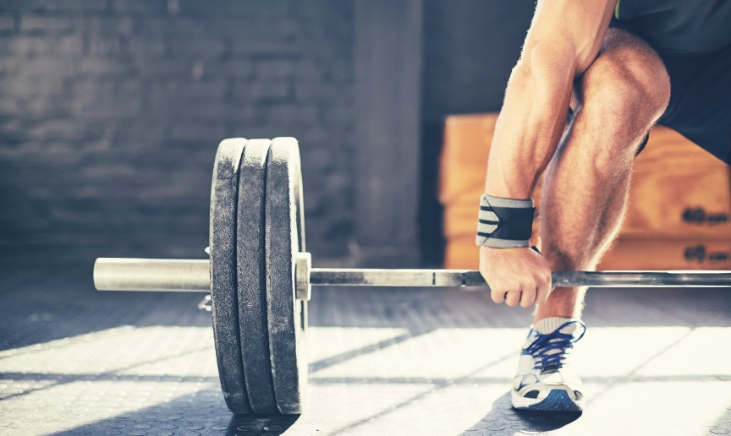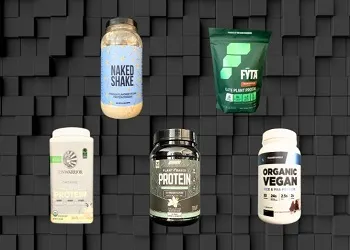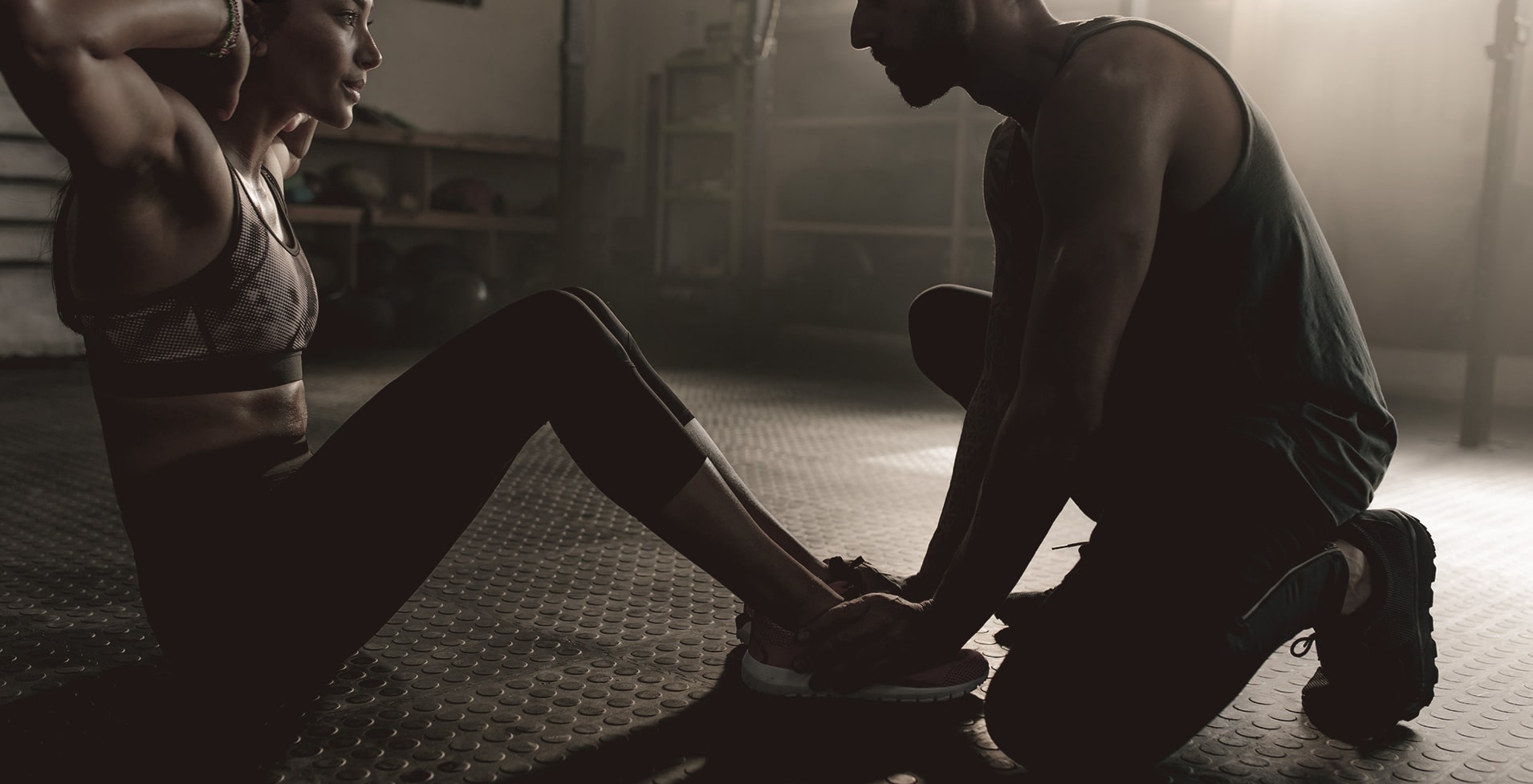Do you want to know how to upgrade your weightlifting routine? Then, you need to check out the top eight types of deadlifts!
Whether you’re a beginner or an experienced lifter who enters powerlifting competitions, understanding all the different types of deadlifts can benefit you in the long run.
The impact of incorporating deadlifting into your gym routine does wonders as a universally effective compound exercise.
This article will teach you the benefits, the different grips, the proper form, and the various types of deadlifts to help you start reaping fitness gains!
Table of Contents
Top Eight Types of Deadlifts
There are more than a few different types of deadlifts. The most popular is known as the sumo, and there is also the conventional deadlift. These deadlifts can be a productive addition to your gym routine to improve progress and help you reach your goals.
Sumo Deadlift
Sumo deadlifts are a common stance used for a barbell deadlift. This deadlift variation incorporates a wider foot stance with the hands inside. It is used for lifting heavier loads of weight, activating the hips, glutes, and quads through a shorter range of motion when compared to a conventional barbell deadlift.

@Juggernaut Training Systems
https://www.instagram.com/juggernauttraining/
Conventional Deadlift
The conventional barbell deadlift is similar to a sumo, popularly used for heavier lifting. Conventional deadlifts are considered the traditional deadlift. They are a great type of deadlift that utilize the hamstrings, quads, calves, and other muscle groups for an all-around effective exercise.
The conventional deadlift form uses a narrow foot stance and a shoulder-width grip outside the hips. The overhand method is expected for the conventional deadlift grip, though a mixed grip can be used when grip strength is an issue with heavier lifts.
Knowing the difference between the different equipment is important, like how much a deadlift bar weighs, for determining how much weight to put on the bar for your deadlift. There are different types of bars, including women’s deadlift bars, that weigh differently than a standard bar you may find set up in the gym.

https://www.athleticinsight.com/exercise/back/deadlift
Snatch Grip Deadlift
The snatch grip deadlift is a form of deadlift used in Olympic lifting. It involves a wide grip on the bar outside the legs and feet.
The range of motion is greater in this deadlift variation to accommodate the wider grip. The form encourages the lower body to minimally depend on the upper body for assistance during the lift. Simultaneously, the grip promotes activation of the upper back muscles and works to improve grip strength.

https://oldschooltrainer.com/badass-exercises-snatch-grip-deadlift/
Romanian Deadlift
Romanian deadlifts are frequently confused with stiff or straight-legged deadlifts. A Romanian deadlift (RDL) has a shorter range of motion when compared to a stiff-legged deadlift.
Unlike the straight-leg deadlift, a Romanian deadlift does not begin on the platform. Instead, it starts standing, ending below the knees but not on the floor. The hips should push as far back as possible, the bar stopping when they can no longer push back. This changes depending on the goal of a hamstring or glute-focus movement and the required alteration in knee bend.

@nikgfitness
https://www.instagram.com/nikgfitness/
Trap or Hex Bar Deadlift
The trap or hex bar deadlift uses a special bar to alter the mechanics of the exercise for a more natural positioning. This deadlift variation changes the center of gravity while lifting to decrease the stress placed on the lower back compared to barbell deadlifts.
For individuals who have lower back problems or find that barbell deadlifts cause pain in the lower back, a hex bar deadlift can be a great variation to try out.

https://garagegymlab.com/5-awesome-benefits-trap-bar/
Suitcase Deadlift
The suitcase deadlift is named after the similarity in movement when lifting a suitcase off the ground. The only difference is that there is no suitcase; instead, there is a kettlebell or dumbbell. This type of deadlift variation effectively activates and strengthens the legs, core, and glutes and is perfect when the gym you’re training in has no more barbells available for barbell deadlifts.

https://www.nofearfitness.com/double-suitcase-deadlift/
Straight Leg Deadlift
Also called a stiff-legged deadlift, the straight-leg deadlift is similar to the RDL but has its dissimilarities. The larger range of motion required to complete a straight leg deadlift better targets the lower back and hamstrings for a nice stretch and activation.
The stiff-legged deadlift begins with the barbell, or other weight, on the floor. Throughout the movement, the knees are kept slightly bent and stiff. Unlike the RDL, this deadlift variation begins on the floor and ends on the floor for a complete range of motion.

Straight (Stiff) Leg Deadlift: Benefits, Muscles Used, and More
Rack Pull
Rack pulls are a type of deadlift that involves strengthening the grip. A loaded barbell is placed on a power rack. It is typically aligned above or below the knees. Keeping the spine neutral and core activated, the bar is lifted to a complete lockout at the top.
Bodybuilders and powerlifters often add rack pulls into their gym routine to improve grip strength for competitions requiring heavier lifting. This deadlift variation can improve form and strengthen the body to prepare the body for heavier loads.

https://weighttraining.guide/exercises/barbell-rack-pull
Top Benefits of Deadlifting
Throughout the proper range of motion required to complete the deadlift exercise, the lower and upper body of the back side, also known as the posterior chain, are used. The type of deadlift determines how intensely these posterior chain muscles are hit, along with what secondary muscles are incorporated, such as the shoulders and quads.
Major Muscle Groups Worked
A compound exercise, deadlifts are an all-around productive component that should be added to your routine if you want to upgrade your gains in and out of the gym. Here is a list of the major muscle groups used during a deadlift.
- Glutes
- Back
- Hamstrings
- Trapezius muscles
- Core
Different Grips for Deadlift Variations
The common deadlift grip is overhand, though there are different variations depending on the type of deadlift and the individual’s preferences. Depending on grip strength, lifting straps are used to accommodate grip, especially when lifting heavier weights during this exercise. Here is a list of potential grips that you can use for different deadlifts.
Pronated/Overhand Grip
The most commonly used grip variation for all types of deadlift is the overhand grip, also referred to as a pronated grip. In this grip position, palms will face down when holding the bar or other equipment.
This grip is excellent for improving grip strength and strengthening the forearm muscles.
Supinated/Underhand Grip
The underhand grip, also called a supinated grip, is when the palms face up. It engages the biceps, lats, triceps, and pectoralis muscles. This grip is often seen when performing bicep curls.
Hook Grip
The hook grip is when the thumb is wrapped securely around the bar. It should parallel the barbell before wrapping the index and middle finger over the thumb. The ring and pinky finger are then typically placed on the barbell.
This grip variation is frequently used for power-based movements like deadlifts and back squats. It encourages better stability and control when lifting during these exercises.

https://www.catalystathletics.com/article/2167/The-Hook-Grip-Why-How-to-Do-It-Correctly/
Mixed Grip
The mixed grip is a combination of a supinated and overhand grip. One hand is placed on the bar facing down, and the other will be palm facing up. This grip variation comes in handy when grip strength is an issue, and you don’t have lifting straps. If both hands are palm down during a deadlift the bar will want to roll out of your hands and will challenge your grip more compared with a mixed grip.
It is important to shift which hand is facing up and down during training as there can be resulting muscular imbalances from using the mixed grip if not.
Correct Deadlift Form
The correct form will differ depending on which deadlift variation you try. Each type of deadlift has a different starting position but essentially the same general requirements to practice safe lifting.
It is always recommended to start using lighter weights to ensure you are consistently lifting with the correct form. This prevents injuries that can coincide with poor form when lifting heavier weights.
Arms Straight
For proper deadlift form, the arms should be kept straight. Among dead lifters, a common cue is “pull the slack out of the bar.” This essentially means adjusting the bar and arms before lifting, more specifically with barbell deadlifts, to remove any excess slack in the arms. Doing so helps prevent excess strain placed on the joints.
By following this cue and keeping the arms straight, the lifter uses proper form. Also, it’s better maintained for better lifting.
Keeping the arms straight will also help prevent injury, such as a bicep tear. Deadlifting with bent elbows can cause excess strain on the arms and joints in the arms, resulting in preventable strain and injury.
Neutral Spine
Maintaining a neutral spine throughout different types of deadlifts is extremely important. It protects the back and neck from injury. This study examined how imparting neutral spine alignment decreases the risk of injury while performing deadlifts.
While keeping a neutral spine, the core and lower back muscles are braced to protect the spine during the lift. This protects the spine from excess strain or stress that could otherwise result in an injury.

How to Deadlift with Proper Form: The Definitive Guide
Bend In The Knees
Depending on the type of deadlift, the depth of the bend in the knees changes. For example, a stiff-legged deadlift will have a minimal bend in the knees. Another example would be a conventional deadlift which has a bigger bend in the knees.
Brace Your Core
To protect your spine, bracing your core is crucial when performing any type of deadlift or heavy lifting exercise. This cue also works to stabilize your trunk while performing exercises such as deadlifts or squats. Stability is always necessary, especially when lifting heavier, to prevent wobbling in the trunk, which can offset balance and deter the quality of lifts.
How To Add Deadlifting To Your Routine
Do you want to know how to add deadlifting or more intensity with this exercise into your routine? If you’re just starting, equipment variations, such as the dumbbell or kettlebell deadlift, can be incorporated into your routine to adjust to the movement patterns of deadlifting. This can help to engage the body more as you switch up the routine. Read on to learn more.
Switch Up Equipment
Dumbbell Deadlift
Most commonly, this variation is used for the Romanian deadlift variation. The dumbbell deadlift is great for beginners who aren’t ready to lift the bar and want to perfect their form first. This deadlift variation is excellent for training the body to become accustomed to the dynamics of deadlifting.
Kettlebell Deadlift
The kettlebell deadlift can be another productive teaching tool for beginners wishing to practice form and technique. The lower positioning of the weight of the kettlebell makes it easier on the back and stability-wise when getting used to deadlifting. I also find that deadlifting with a single kettlebell gives you a very simple exercise.
Barbell Deadlift
The traditional barbell deadlift is what powerlifters use in competitions, white powder dusting hands and the bar. The barbell is a compound movement and engages the posterior chain and other muscles, such as the quads and core.
The barbell can also be used for other forms of exercises like hip thrusts and squats. We recommend checking out these 5 best barbell pads for squats and hip thrusts to incorporate into your routine for better comfort while exercising.
Trap Bar Deadlift
Trap bar deadlifts are another popular type of deadlift using unique equipment.
Trap bars offer a special design that makes it easier to engage an upright torso throughout the deadlifting movement. The design also allows for a more natural hand position for an easier time lifting the weight off the ground.
Change Intensity
Paused Deadlifts
If there is a stall in progress in your deadlifts, consider adding paused deadlifts. This lift ups the intensity of your lift by boosting the stress placed on the muscles through time under tension.
In a paused deadlift, the weight must be paused a few inches from the ground in the eccentric, or lowering, portion of the deadlift. Hold, then release to place the weight on the ground.
A lighter weight can be used as the intensity of the lift has increased. The time under tension can vary depending on the training plan, but normally the pause should only be about two seconds.
Deficit Deadlift
The deficit deadlift is performed from an elevated platform to widen the range of motion to perform the exercise. Lifters with poor strength in the lower portion of the deadlift movement can better engage the muscles to strengthen them in the increased range of motion instigated through the deficit deadlift.
Frequently Asked Questions
What are the best types of deadlifts for glutes?
The Romanian deadlift and the sumo deadlift are the most touted types of deadlifts for glutes. These movement patterns activate the glutes in a productive range of motion for beneficial glute gains and improvements.
Which type of deadlift is best?
This question is controversial, especially concerning the lifelong debate of sumo versus conventional deadlift. Many believe the sumo deadlift is “cheating” when heavy lifting, as the range of motion, is smaller than the conventional deadlift.
The best deadlift widely depends on your goals and what works best for you. A powerlifter, bodybuilder, Olympic lifter, and recreational gym goer will all have different goals to achieve during their lifts.
What is the hardest type of deadlift?
All deadlift variations can be hard depending on the load placed with additional weight. The deficit deadlift is more complex than other types due to the time under tension of the movement that requires the muscles to work harder in a full range of motion.
What is the easiest deadlift to learn?
The hex or trap bar deadlift may be the easiest for beginners to learn. Hand placement and feet stance is easier to set up one’s form for starting and becoming accustomed to executing a deadlift.
Which deadlift builds the most muscles?
The conventional or traditional deadlift is best for building the most muscles. It is effective for stimulating strength and muscle growth. The movement pattern better incorporates more muscles in the body for better muscle activation.














